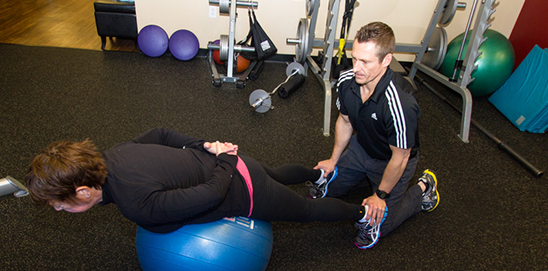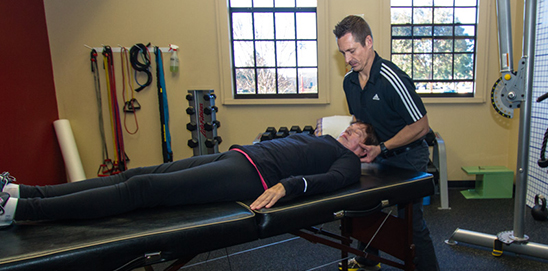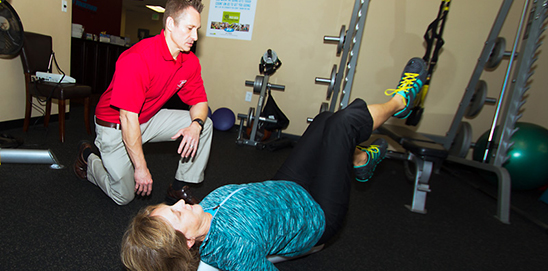Physical Therapy for Back & Neck Rehabilitation
At San Diego Sports Physical Therapy we combine manual therapy techniques and Certified McKenzie MDT (Mechanical Diagnosis and Treatment) protocols to increase range of motion in the spinal joints which in a majority of conditions will restore function and alleviate pain.
The McKenzie Method
The McKenzie Method is more than extension exercises. McKenzie is a comprehensive approach to spine rehabilitation based on mechanical diagnosis and therapy. Most remarkable, but least appreciated, is the McKenzie assessment process.
Assessment:
Unique to the McKenzie Method is a well-defined algorithm that leads to the simple classification of spinal-related disorders. It is based on a “cause and effect” relationship between pain behavior as well as the pain response to repeated test movements, positions and activities during the assessment process. The end result is the underlying disorder can be quickly identified through objective testing in correlation with subjective information. The McKenzie classification of spinal pain provides a consistent means of classifying patients to determine appropriate treatment.
Three mechanical syndromes:
- Postural: End-range stress of normal structures
- Dysfunction: End-range stress of shortened structures (such as scarring, fibrosis, nerve root adherence)
- Derangement: Anatomical disruption or displacement within the motion segment (most commonly the disc)
All three mechanical syndromes occur in the cervical, thoracic and lumbar regions of the spine. Each distinct syndrome is addressed with mechanical procedures utilizing movement and positions.
Treatment:
McKenzie treatment emphasizes education and patient involvement. This promotes rapid restoration of function and independence. It minimizes the number of visits to the clinic because the patient is self-treating when appropriate. If a problem is more complex, self-treatment may not be possible right away. A certified McKenzie clinician will know when to provide additional advanced hands-on techniques until the patient can successfully manage the condition on their own.
Ultimately, most patients can successfully treat themselves when provided with the necessary knowledge and tools. An individualized self-treatment program tailored to the lifestyle of the patient puts the patient in control safely and effectively.
Prevention:
Patients gain experience learning to self-treat the present problem. The management of these skills and behaviors will minimize the risk of recurrence and allow patients to rapidly manage themselves should symptoms occur in the future.
Our back and spine experience includes:
- Pre/ Post-natal back pain
- Chronic back pain
- Lumbar disk herniation
- Lumbar Facet Syndrome
- Lumbar ligament sprain/muscle strain
- Lumbar radiculopathy and Sciatica
- Arthritis
- Spondylolisthesis
- Lower back pain
- Sacroiliac pain (SI)
- Osteoporosis
- Scoliosis
- Degenerative disk disease
- Compression fracture of the spine
- Post surgical rehabilitation lumbar discectomy, laminectomy and fusion
Our neck experience includes:
- Cervical ligament sprain/muscle strain
- Chronic neck pain
- Cervical disk herniation
- Cervical radiculopathy
- Cervical fracture
- Cervical spondylosis
- Arthritis
- Cervicogenic headache
- Thoracic outlet syndrome
- Compression fracture of the spine
- Cervical disc surgery
- Post surgical rehabilitation cervical disk surgery, laminectomy and fusion of neck
- Cervical stenosis
- Myofascial pain syndrome
- Degenerative disk disease






